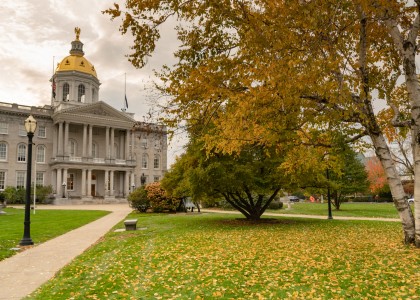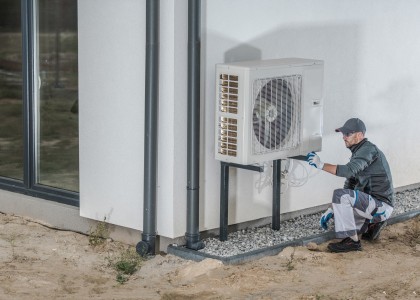Utility regulators and lawmakers in Arizona, Massachusetts, and New Hampshire are set to make decisions in the coming weeks that will have major implications for these states’ climate efforts. The outcomes will determine the course of energy efficiency programs that serve millions of customers and could create thousands of clean energy jobs.
Amid the backdrop of an ongoing economic recovery, these energy-saving programs provide a critical pathway to achieving ambitious climate goals by immediately cutting greenhouse gas emissions, creating jobs, and delivering other utility system, health, and equity benefits that are vital to building an inclusive clean energy future.
The upcoming decisions come as ACEEE is preparing to revamp and reimagine our State Energy Efficiency Scorecard, which annually ranks states on energy-saving progress. Many of the 2022 report’s new scoring metrics—including an expanded focus on advancing energy equity and electrification—will directly correspond to programs and policies under consideration in these states, and in turn could shape their respective performances in future State Scorecards.
Below we highlight exciting state policy developments we’re keeping an eye on and the energy-saving opportunities they could create.
Massachusetts
The Massachusetts Department of Public Utilities (DPU) stands poised this month to mark a historic evolution in its energy efficiency programs with a pending decision on whether to approve the newest three-year Mass Save plan. The 2022–24 plan includes a strengthened emphasis on electrification, equity, and workforce development and could serve as an important model for other states seeking ways to optimize the carbon benefits of energy-saving programs to support new climate targets.
The plan won unanimous approval from the state’s Energy Efficiency Advisory Council in October 2021 after stakeholders spent months developing programs to help the state meet the ambitious goals of climate legislation signed by Governor Baker in March that aims to achieve net-zero emissions by 2050. The plan also reflects critical updates the legislature has made in recent years to expand the scope and priorities of the state DPU, with an increased focus on equity and reducing greenhouse gas emissions to ensure efficiency programs support the state’s efforts to decarbonize by midcentury.
This realignment of efficiency with decarbonization was also formalized last July. At that time, the state’s Energy and Environmental Affairs Secretary that are designed to achieve a reduction of half a million metric tons of CO2 emissions from the electric sector and 341,000 metric tons of CO2 from natural gas programs. The goals include a focus on measures that will continue to yield cumulative savings over the next decade.
While Massachusetts has historically led the rankings of the State Scorecard on the strength of its strong commitment to energy efficiency, its fall to second place behind California in 2020 demonstrated the fierce competition it faces from other states that are doubling down on commitments to clean electricity and decarbonization. The 2022–24 Mass Save plan calls for programs—including enhanced efforts to bundle weatherization and efficient electrification, support all-electric construction, and help environmental justice communities and rental properties—that could position Massachusetts well to potentially reclaim its Scorecard throne later this year.
New Hampshire
Stakes are also high for the Granite State. An existential battle over the future of its energy efficiency programs is unfolding between the New Hampshire Public Utilities Commission (PUC)—which issued a decision late last year to gut program funding—and lawmakers who are working against the clock to pass legislation that would restore program support for this year and beyond. At risk are hundreds of jobs across the state and millions of dollars in energy bill savings for New Hampshire ratepayers.
The PUC decision in November 2021 effectively destroyed the state’s energy efficiency resource standard (EERS), a proven best-practice policy that has been instrumental in delivering energy savings and growing the efficiency industry in New Hampshire as well as 26 other states. But hope is still alive for programs under House Bill 549, which unanimously passed the state House of Representatives in early January. The bill would restore efficiency funding to 2020 levels, when the state reported net electric savings just above 1% (ranking 15th that year among states), though far short of levels proposed by utilities in their rejected 2022–24 plan.
And last week the Senate Energy and Natural Resources Committee took House Bill 549 an important step further by unanimously voting for an amendment that would effectively reinstate the EERS. The measure requires the PUC to deliver triennial energy efficiency plans in perpetuity and provide for shareholder performance incentives that reward utilities’ efficiency progress. The bill also would restore the Granite State Test, a carefully designed cost-effectiveness screening tool the state approved in 2019 and which provides the cornerstone of the state’s efficiency efforts by ensuring programs save customers money.
New Hampshire utilities and policymakers have made laudable progress on energy efficiency under the state's EERS in recent years, yielding steadily growing levels of savings, and helping the state break into the top 20 of the State Scorecard with an 18th place finish in 2020. However, the recent PUC decision to retreat from its commitment to comprehensive cost-effective energy savings risks squandering that momentum and walking away from a carefully designed plan that would have written an exciting new chapter in energy efficiency for the state. We eagerly await potential next steps by the state legislature that could pull these programs back from the brink.
Arizona
Arizona’s energy efficiency future also stands at an important crossroads this week, with the Arizona Corporation Commission scheduled on January 26 to consider Energy Rules that have continued to persevere despite multiple delays and hurdles. The culmination of years of hard work and collaboration among utilities, commission staff, and advocates, the rules would finalize plans to decarbonize the Arizona grid by adopting a clean electricity standard, and would add Arizona to the list of 20 other states that have also approved similar 100% clean energy goals.
The rules extend and expand another important standard for electric utilities: the state’s EERS. Originally passed in 2010, Arizona’s EERS has been a key driver in developing strong utility efficiency programs to save customers money and strengthen local economies. These programs have saved ratepayers more than $1.4 billion over the past decade while supporting more than 40,000 jobs in recent years. For additional details about the rules and their rollercoaster regulatory journey, see our previous blog post.
These upcoming decisions mark a crossroads for these states. They will determine whether the three states choose to embrace the economic, health, and climate benefits of reducing energy waste, or risk surrendering the proven progress of these programs that have delivered billions in savings over the last decade. In each of these states, much of the hard work has already been done by stakeholders to carefully develop these common-sense plans and policies that would write an exciting next chapter in their clean energy futures. It’s now up to state legislatures and regulators to decide whether to turn the page.




